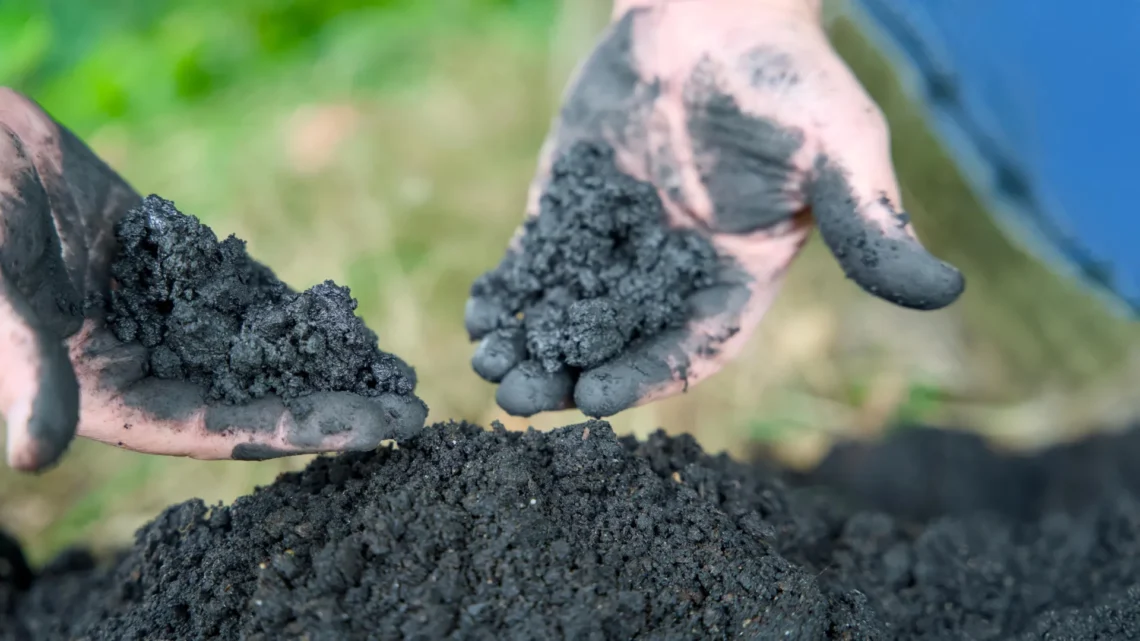We’ve all heard the story: biochar cleans water by adsorbing pollutants—trapping them like a sponge. Or, in more complex setups, it acts as a catalyst to help oxidants like hydrogen peroxide break down toxins. However, Dr. Gao’s team posed a bold question: Can biochar degrade pollutants all on its own? It turns out, it can—and it’s been doing it quietly all along.
The Electron Ninja: Biochar’s Secret Power
The secret lies in electron transfer—a natural ability of biochar that’s been overlooked for years. Imagine this: instead of just catching a bad guy (adsorption), biochar can now take them down by itself (direct degradation). Through advanced electrochemical tests, quantification techniques, and correlation analysis, the team demonstrated that biochar actively breaks down organic pollutants through direct electron transfer—without needing any extra chemicals. In their experiments, direct degradation accounted for up to 40% ± 10% of the total pollutant removal. That’s almost half of the cleaning power coming directly from biochar itself!
What Makes Biochar So Electric?
Not all biochar is created equal. The team found that three key features amplify its electron capabilities:
- C-O and O-H functional groups – the “handholds” for electron transfer
- Graphitic carbon structure – the “highway” for electrons to travel quickly. The better the structure, the faster pollutants disappear.
Even after five reuse cycles, the biochar maintained its direct degradation power—nearly 100% stable. That’s sustainability with endurance!
Why This Changes Everything
This study completely redefines how we consider biochar for wastewater treatment. It’s not just a passive filter or a sidekick catalyst; it’s an active pollutant destroyer.
This means:
- Fewer chemicals needed in water treatment plants
- Lower costs and less sludge
- Greener, smarter purification for industries and communities
“Biochar has been underestimated,” says Dr. Gao. “It’s not merely a sponge—it’s a battery, a conductor, and a degrader all in one. We’re just starting to grasp its true potential.”
A New Era for Environmental Engineering
With industrial pollution remaining a global challenge, discoveries like this are more than just laboratory successes—they’re blueprints for a cleaner future. By clarifying the differences between adsorption, direct degradation, and indirect (catalytic) degradation, this research paves the way for smarter, more efficient biochar designs that can be custom-built for real-world water crises. At the heart of it all is Dalian University of Technology, standing out as a hub of innovation in environmental science and industrial ecology.
Ready to Rethink “Clean”?
Next time you hear “biochar,” don’t just think “carbon-rich charcoal.” Think of it as an electron-powered eco-warrior—silently zapping pollutants, one electron at a time. Kudos to Dr. Yuan Gao and the DUT team for pushing the boundaries of green technology. Stay tuned, stay curious, and let’s keep turning science into solutions—for cleaner water, healthier ecosystems, and a more sustainable world.
Summary: Dr. Gao’s research reveals that biochar not only adsorbs pollutants but can also actively degrade them on its own through direct electron transfer. This breakthrough redefines biochar’s role in wastewater treatment, reducing chemical use and costs while promoting sustainability. The findings highlight biochar’s potential as a powerful tool in environmental engineering, paving the way for innovative solutions to combat pollution.





